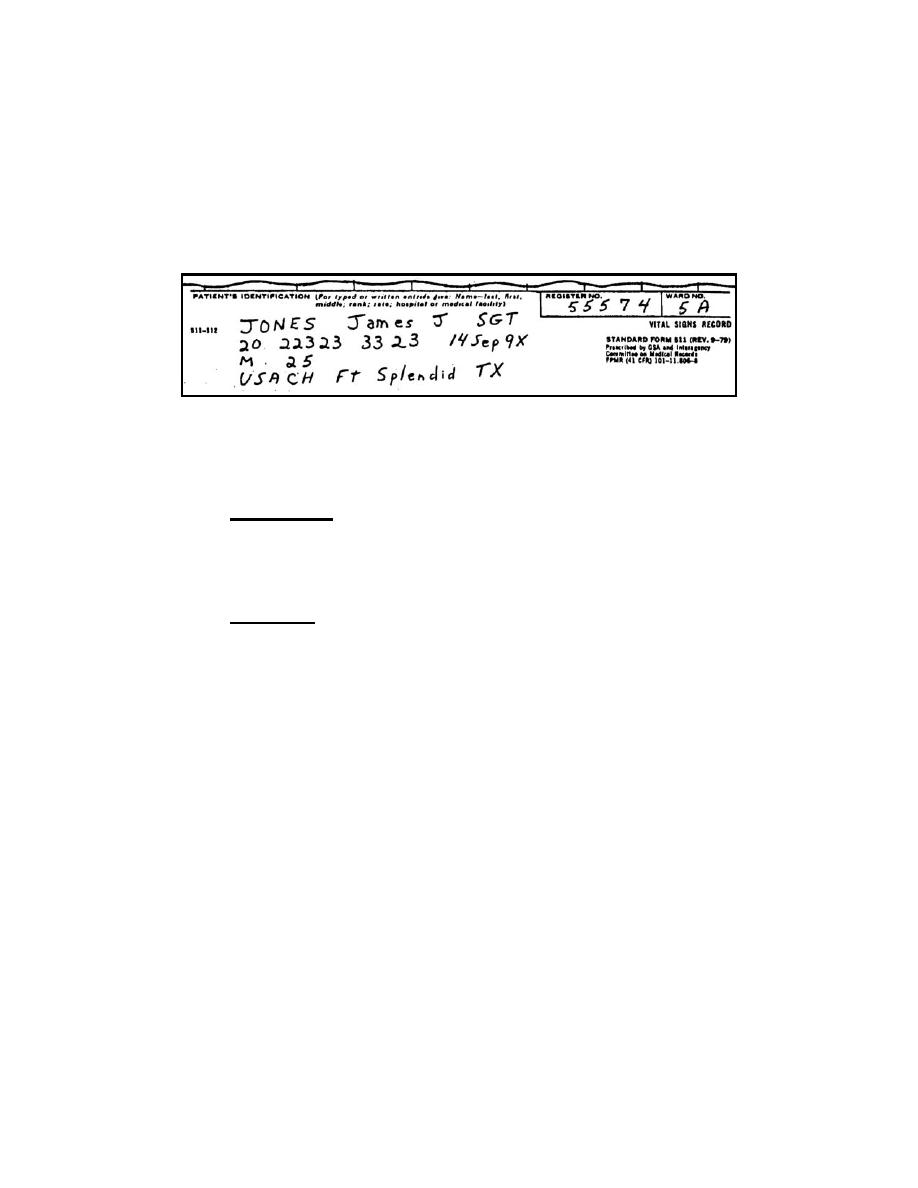
a. Patient's Identification Section. Enter the patient identification information
in the patient identification section located at the bottom of the SF 511. This information
may be typed, hand printed, or imprinted with an addressograph machine. For
example, Sergeant James J. Jones, age 25, SSN 223-23-3323, was admitted to US
Army Community Hospital, Fort Splendid, Texas, at 0400 on 14 September 199X. He
was given hospital register number 55574 and was assigned to Ward 5A. This data
was recorded as follows:
b. Heading Entries. Enter the hospital day, the post-op/partum day (if
applicable), calendar date, and times that the vital signs are taken at the top of the SF
511.
(1) Hospital Day. The row of blocks horizontal to "Hospital Day" indicates
the number of days the patient has been in the hospital. The day the patient enters the
hospital (the day of admission) is referred to as "day 1." The following day is "day 2,"
and so forth.
(2) Post- Day. The row of blocks located under the hospital day row
indicates the date the patient underwent an operation or, in the case of a female patient
who has given birth, the date of delivery and the number of days which have passed
since that day. If the patient did not undergo an operation or delivery, the row is left
blank.
(a) Write "OP" after "POST-" if the patient had an operation. Write
"PARTUM" after "POST-" if the patient had a delivery.
(b) Indicate the date of surgery (DOS) or date of delivery (DOD) by
writing the appropriate abbreviation in the block of the "POST- DAY" row which
corresponds to the calendar date of the event.
(c) Indicate the post-operation or post-partum date by writing the
appropriate numeral in the column headings. The day following the date of surgery is
post-op day 1; the day following the date of delivery is post-partum day 1. The following
days would be post-op/post-partum day 2, post-op/post-partum day 3, and so forth.
MD0920
1-17



 Previous Page
Previous Page
